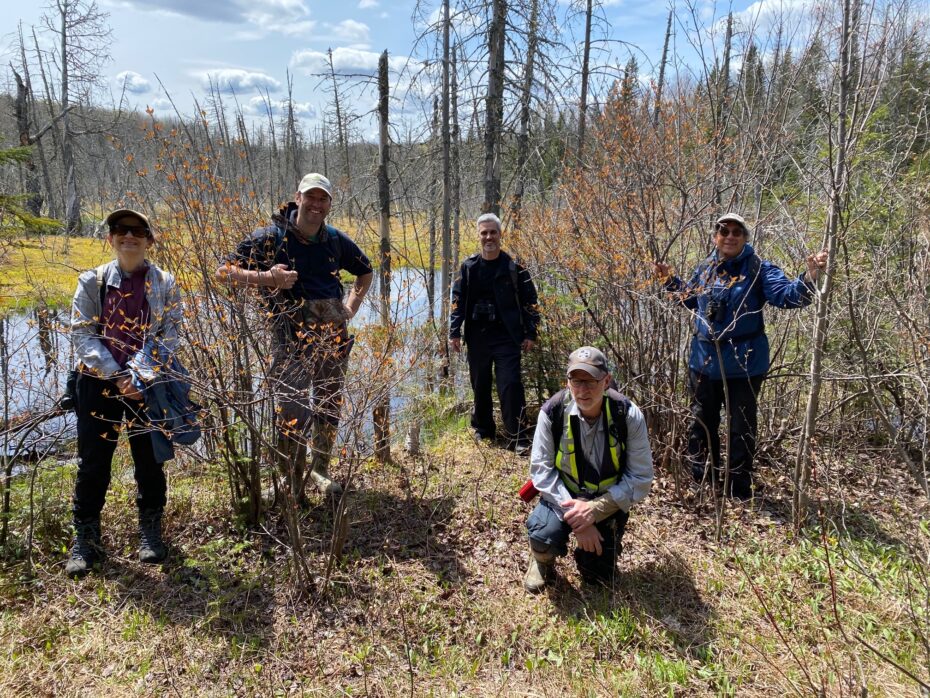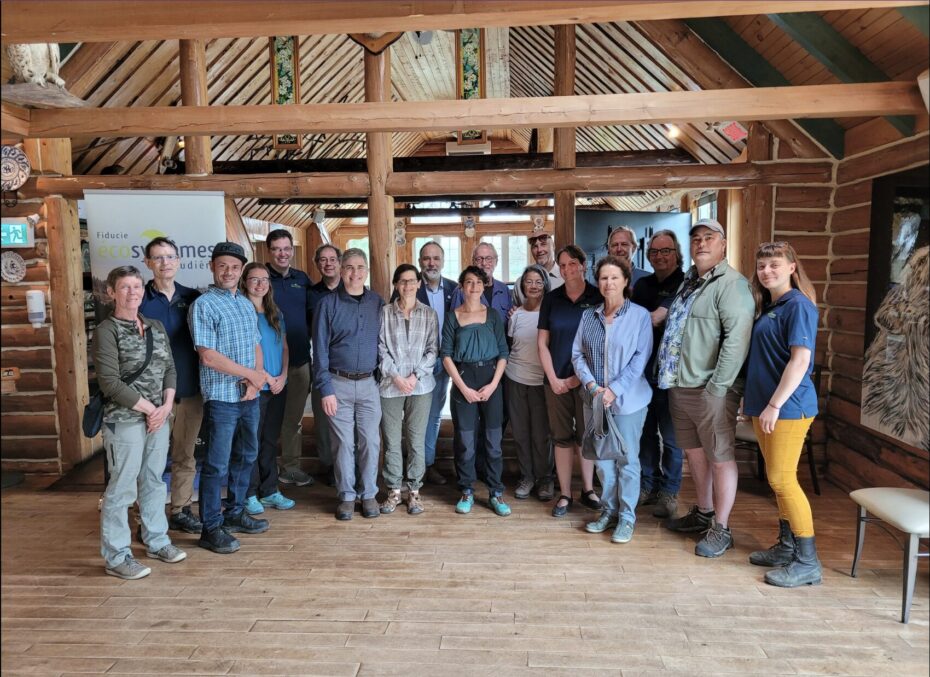
In the heart of Lanaudière, Quebec, a 233-hectare tract of wilderness stands as a living testament to the resilience of nature and the generous stewardship of McGill chemistry professor Linda Reven.
Once illegally logged to the point of utter desolation, the land, near Sainte-Émélie-de-l’Énergie, was bought by Reven in 2002. Earlier this year, she donated the reforested and revitalized property to the Fiducie de conservation des écosystèmes de Lanaudière (FiCEL), a local land trust.
“It’s a huge piece of land on the Rivière Noire – the largest land donation we’ve ever received,” said Réjean Dumas (BSc’81), biologist and FiCel Trustee. “It is an important watershed for the region. Linda’s donation is essential to our efforts to build a contiguous protected area.”
‘Big brown spot’
Prior to buying the plot of land, Reven remembers seeing a satellite photo of the region.
“There it was, a big brown spot surrounded by green,” she said. Beaver dams had been bulldozed, most of the forest had been clear cut and ponds had been drained to irrigate a cannabis plantation in one corner. Much of the devastated terrain was being used as an illegal dump for garbage.
“All I could think about was restoring it and protecting it,” she said.
On a whim, Reven checked the price.
“I couldn’t believe it, $70,000 for about 500 acres. Ironically, it was so cheap because it had been clear cut,” she said.
As with many natural areas in Quebec, the Lanaudière wilderness is under constant strain of development.
“There are far more examples of forests that become shopping centres than farms that become forests,” said Dumas.
Bucking the trend to level, build and populate, Reven bought the land to plant, grow and restore its wild beauty. She had the land reforested, and, over the years, wildlife returned.
“It’s a fantastic wildlife habitat,” said Reven, noting that trail cams regularly film moose, fishers, fox, marten, wolf and bear. Happily, the beavers, once killed by loggers to prevent them from building dams, have reclaimed their habitat. Beaver ponds dot the landscape.
“I’ve been working habitat restoration most of my life,” said Dumas. “Sometimes nature can restore itself, but not always.”
Stewards of the land
The land was recently evaluated at $600,000, but Reven was told if she parcelled it into smaller plots, she could make as much as $1 million. The thought never crossed her mind.
“When I bought the property, I never felt like it belonged to me,” she explained. “I couldn’t imagine developing it. … But once I restored it, I didn’t know how to protect it myself, so I contacted FiCEL.”

“It was part of their plan when they acquired the land to have it protected and not necessarily by keeping ownership of it,” said Dumas. “It is the altruistic dimension of the donation that shows who Linda and her husband are as human beings.”
The land is now a part of the FiCEL’s growing network of protected land. Coincidentally, one of FiCEL’s first parcels of land was a 138-hectare plot donated by retired Faculty of Medicine and Health Science professor Larry Conochie and his wife, France Bourdon (BSc’63, MDCM’67), in 2017.
FiCEL’s stewardship is three-pronged: surveillance, monitoring and education, and research. Volunteers like Dumas establish management plans for each area, regularly tour the sites to ensure people aren’t encroaching on them, conduct surveys of plants and animals to get a clearer picture of the biodiversity of the area and collaborate with researchers.
In a race against time to protect the wilderness
Reven’s journey as champion of a Quebec wilderness had an unlikely beginning.
“I grew up in Chicago, so it was very urban. I had had very little experience in wilderness areas,” she said. “But I was always attracted to the natural world.”
Reven came to McGill in 1993.
“I could have had more funding at a U.S. university, but I was very attracted to McGill and Montreal’s proximity to the wilderness,” she said. “My husband and I did a lot of primitive camping, and I was shocked to see, when you go beyond the provincial parks, how much of the forests had been clearcut.
“For me, the satisfaction is doing my part to help the land recover,” says Reven. “It’s important to have wildlife corridors. We’re working on continuing the connection all along the valley, so that there’s a network, because it’s a race against time before there’s more development.”
